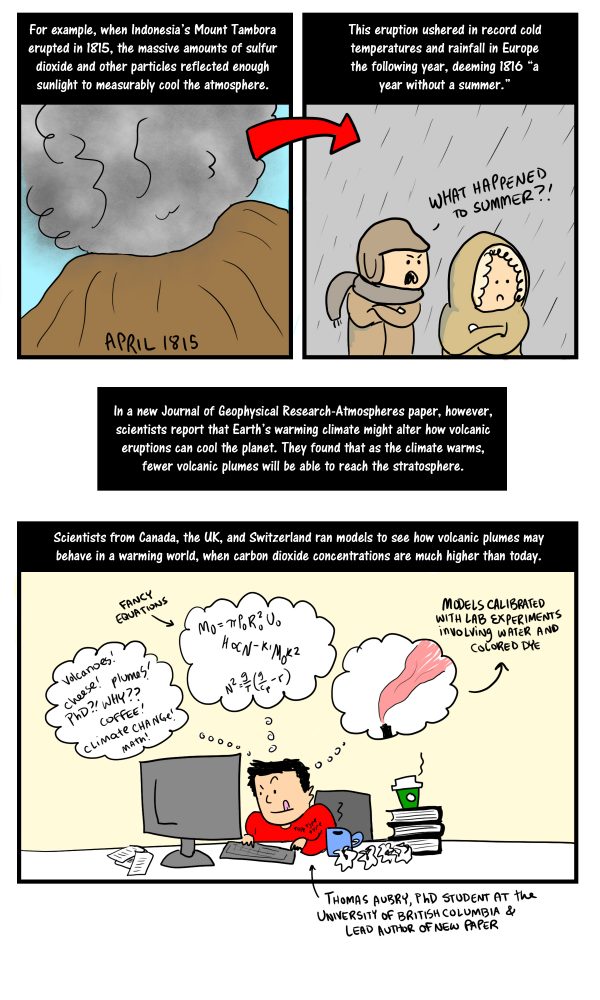16 November 2016
Drawn to Geoscience: Cartoons of Volcanoes
Posted by Olivia Ambrogio
This post is part of our Drawn to Geoscience series where our own JoAnna Wendel creates (and explains her process for) comics of stories published in AGU’s journals and covered by our blogs or news site. The news story, Global warming could reduce volcanic cooling effects on climate, can be found on the GeoSpace blog.
By JoAnna Wendel
(Note: If you want to skip the “how I did it” section, scroll down to the full comic!)
As I was thinking about my next comic, one of AGU’s public information officers—they’re the ones who write press releases and blog posts about AGU journal articles—mentioned a blog post they were working on about how climate change will affect the behavior of volcanic plumes. The post was based on a new Journal of Geophysical Research: Atmospheres paper.
I thought this paper would make great material for a comic. It’s got nice visual elements like giant, dark plumes billowing out of a volcano (and who doesn’t like volcanoes) and a more abstract element like the layers of the atmosphere which are simple to present visually.
One thing I did struggle with this one was scale—this research involves volcanoes injecting plumes of ash and gas into the stratosphere, which is about 10 kilometers above the surface of the Earth, and volcanoes are more like 2-4 kilometers high, on average.
I tried to make clear that there’s a lot of space between the top of the volcano and the bottom of the stratosphere, while also fitting both components into a reasonably-sized panel. In the end, I think I came up with a good compromise.
Another thing that’s hard to incorporate into a comic is the kind of modeling involved with this research. I don’t know what the models looked like, but I was pretty sure there was some math involved. It was the lead author who suggested I draw him working at a computer, and I added stacks of paper, books, and of course, coffee. In thought bubbles over his head I could incorporate things like equations he used in the research and an example of a lab experiment that was part of the research.
Other than that, this story was relatively simple to translate from words to pictures—thanks to the volcanoes!













 The Plainspoken Scientist is the science communication blog of AGU’s Sharing Science program. With this blog, we wish to showcase creative and effective science communication via multiple mediums and modes.
The Plainspoken Scientist is the science communication blog of AGU’s Sharing Science program. With this blog, we wish to showcase creative and effective science communication via multiple mediums and modes.
I enjoyed this very much. I wish more interpretation was written to engage the audience. So many suffer under the weight of the writer’s curse of knowledge. This communicates to the layman without dumbing it down. Well done.